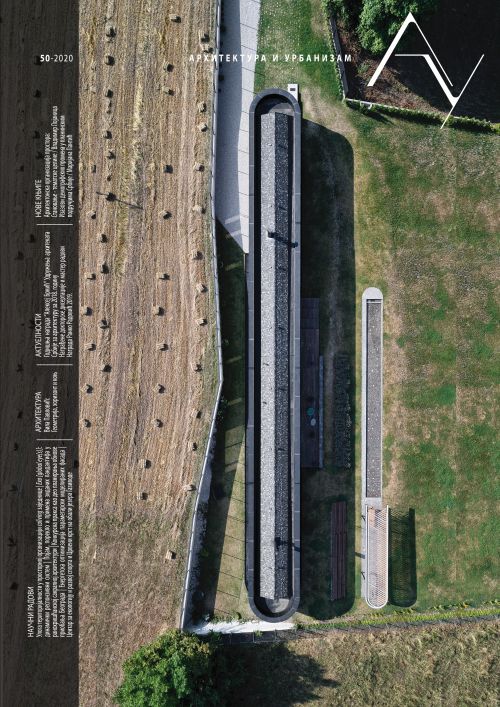Significance of Territoriality in Spatial Organization of Coliving Communities
english
Abstract
The issue that the research focuses on is spatial organization of the coliving housing concept and the role that territoriality plays in their typological determination. Past research of coliving concept did not result in a clear systematization of the concept. By comparative analyses of characteristic examples it can be confirmed that in practice, a wide variety of relations between the main functional groups is present (common, shared and individual spaces) and that through links between all of them, different types of the coliving concept are generated. The main thesis of this paper is that the primary parameter, serving as the base of different concepts of coexisting in a shared space, is the “experience of territoriality” i.e. the level of tolerance that space users have in their readiness to share the same space and content with unknown individuals. The main contribution of the paper is the defining of six characteristic types of coliving communities. The importance of this paper is reinforced not only the fact that it initiates the possibility of further theoretical research in the housing sphere, but also in its practical usage in spatial and functional organisation of coliving and cohousing spaces. The presented concepts and classifications can serve as the basis for the definition of new programmes and the design of coliving objects.
References
Ache, P., Fedrowitz, M. (2012). The Development of Co-Housing Initiatives in Germany, Built Environment 38/3, pp. 395–412.
Alfirević, Đ., Simonović Alfirević, S. (2019). Spatial Organization Concepts for Living Spaces with Two Centres, Spatium 42, pp. 1–7.
Bajić, T. (2010). Dom-komuna – stambeni eksperiment ruskog konstruktivizma, Arhitektura i urbanizam 30, str. 34–46.
Bamford, G. (2005). Cohousing for Older People: Housing Innovation in the Netherlands and Denmark, Australasian Journal on Ageing 24/1, pp. 44–46.
Bamford, G. (2004). 'Living Together on one's own': Cohousing for Older People - an Example from Denmark and The Netherlands. In: Proceedings from Queensland Shelter Housing Conference, Gold Coast, Queensland, 15-17 June, pp. 1–17.
Carswell, A. (2012). The Encyclopedia of Housing, Second Edition, Thousand Oaks, Sage.
Edney, J. (1974). Human Territoriality, Psychological Bulletin 81/12, pp. 959–975.
Efran, M., Cheyne, J. (1973). Shared Space: The Co-operative Control of Spatial Areas by Two Interacting Individuals, Canadian Journal of Behavioural Science / Revue canadienne des sciences du comportement 5/3, pp. 201–210.
Gifford, R. (1983). The Experience of Personal Space: Perception of Interpersonal Distance, Journal of Nonverbal Behavior 7/3, pp. 170–178.
Hall, E. (1966). The Hidden Dimension, Garden City, New York, Anchor Books.
Hoppenbrouwer, B. (2019). The Community Effects of Co-living: Exploring Opportunities for Dutch Developer-led Co-living in Fostering Community Building Among Residents, Master thesys, Nijmegen, Radboud University, Nijmegen School of Management.
Hudson, J. (2017). Senior Co-housing: Restoring Sociable Community in Later Life, In: Benson, M., Hamiduddin, I. (ed.) Self-Build Homes: Social Discourse, Experiences and Directions, UCL Press, pp. 157–173.
Kopec, D. (2010). Environmental Psychology for Design, New York, Fairchild Publications.
Mathisen, B. M., Kofod-Petersen, A., Olalde, I. (2012). Co-living Social Community for Elderly. In: Eichler, G., Wienhofen, L. W., Kofod-Petersen, A. & Unger, H. (ed.), Proceedings from 12th International Conference on Innovative Internet Community Services (I2CS 2012). Bonn, Gesellschaft für Informatik e.V., pp. 38–47.
Mercer, G.W., Benjamin, M.L. (1979). Spatial Behavior of University Undergraduates in Double-occupancy Rooms, Journal of Applied Social Psychology 9, pp. 32–44.
Osborne, R. (2018). Best Practices for Urban Coliving Communities, Master Thesis, Lincoln, University of Nebraska.
Pagh, C., Williams, J., Braskov, R. S., Christensen, C. V. (ed.) (2018). Imagine: Exploring the Brave New World of Shared Living, Copenhagen, Space 10, Urgent.Agency.
Schmid, S., Eberle, D., Hugentobler, M. (ed.) (2019). A History of Collective Living: Models of Shared Living, Basel, Birkhäuser.
Sorokowska, A., Sorokowski, P., Hilpert, Peter. (2017). Preferred Interpersonal Distances: A Global Comparison, Journal of Cross-Cultural Psychology 48/4, pp. 577–592.
Spencer, C., Banerji, N. (1985). Strategies for Sharing Student Accommodation: A Comparison of Male and Female Student Responses to Single and Shared Rooms, Architecture and Behavior 2/2, pp. 123–135.
Steding, D. (2019). Coliving: An Emerging Term Without a Common Definition, Master thesys, KTH, School of Industrial Engineering and Management.
Strube, M., Werner, C. (1982). Interpersonal Distance and Personal Space: A Conceptual and Methodological Note, Journal of Nonverbal Behavior 6/3, pp. 163–170.
Taylor, R., Fergusson, G. (1980). Solitude and Intimacy: Linking Territoriality and Privacy Experiences, Journal of Nonverbal Behavior 4, pp. 227–239.
Thomsen, J. (2008). Student Housing - Student Homes?: Aspects of Student Housing Satisfaction, PhD Thesys, Trongheim, Norwegian University of Science and Technology.
Vanazzi, L. (2019). Co-living: A Strategy for the Future City Housing, Master thesys, Politecnico di Milano, Scuola AUIC.
Vestbro, D. U. (ed.) (2010). Living Together – Cohousing Ideas and Realities Around the World, Proceedings from International collaborative housing conference, May 5-9, Stockholm, Royal Institute of Technology.
Vestbro, D. U., Horelli, L. (2012). Design for Gender Equality - The History of Cohousing Ideas and Realities, Built Environment 38/3, pp. 315–335.
Williams, Jo. (2005). Designing Neighbourhoods for Social Interaction: The Case of Cohousing, Journal of Urban Design 10/3, pp. 195–227.
Williams, Jo. (2002). Shared Living: Reducing the Ecological Footprint of Individuals in Britain, Built Environment 28/1, pp. 57–72.
Wood, H. (2017). Co-living 2030: Are you Ready for the Sharing Economy?, 28.12.2017., https://archinect.com/features/article/150042590/co-living-2030-are-you-ready-for-the-sharing-economy (приступљено 13.3.2020.)

